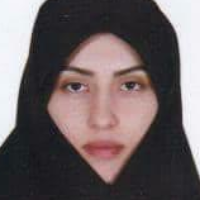A Comparative Study of Divorce in the Culture of Jahiliyyah and the Quran Based on Epistemological Contexts
The understanding of the prevailing thought system of Jahiliyyah people about womenchr('39')s issues provides a basis for a better cognizance of the laws and rules related to women in Islam. “Divorce” is one of the issues with significant differences in Jahiliyyah culture and Islam, and the Quran, with its transformational and corrective approach in this regard, has played a key role in human society. The main difference is that Jahiliyyah Arabs had an easy and simple approach to “divorce”. This issue is rooted in the epistemological context of the Jahiliyyah culture about womenchr('39')s rights and undermining them in the area of “divorce”. In the age of Jahiliyyah, “divorce” took place without any preconditions and conditions (except the consent of the man), and its purpose was to seek revenge or punish the woman or her tribe. However, Islam abolished some types of “divorce” such as ila’, zihar and azl and modified some others like rej’ei, khul’, mubarat and ba’en. After the “divorce”, the woman did not have the right to marry another man (even after the waiting period after the divorce ended) due to the manchr('39')s extreme prejudice. The lack of restriction on “divorce” and its non-verbal nature was a tool in the hands of men to harass women. According to interpretive and historical sources, “the waiting period after the divorce” was among the controversial issues at the time of Jahiliyyah while it has been emphasized by Quranic and narrational citations in Islam, and according to the interpreters, “ثلاثه قروء” in verse 228 of Surah al-Baqarah refers to three times of purification from menstruation in order for “the waiting period after the divorce” to be completed. Therefore, in regard to “divorce”, the purpose of Islam is to provide a desirable model of humanity and respect for women. The information of this article has been collected using the library method (by referring to historical and poetic books of pre-Islamic period and interpretation sources) and processed using the comparative and analytical methods.
- حق عضویت دریافتی صرف حمایت از نشریات عضو و نگهداری، تکمیل و توسعه مگیران میشود.
- پرداخت حق اشتراک و دانلود مقالات اجازه بازنشر آن در سایر رسانههای چاپی و دیجیتال را به کاربر نمیدهد.




